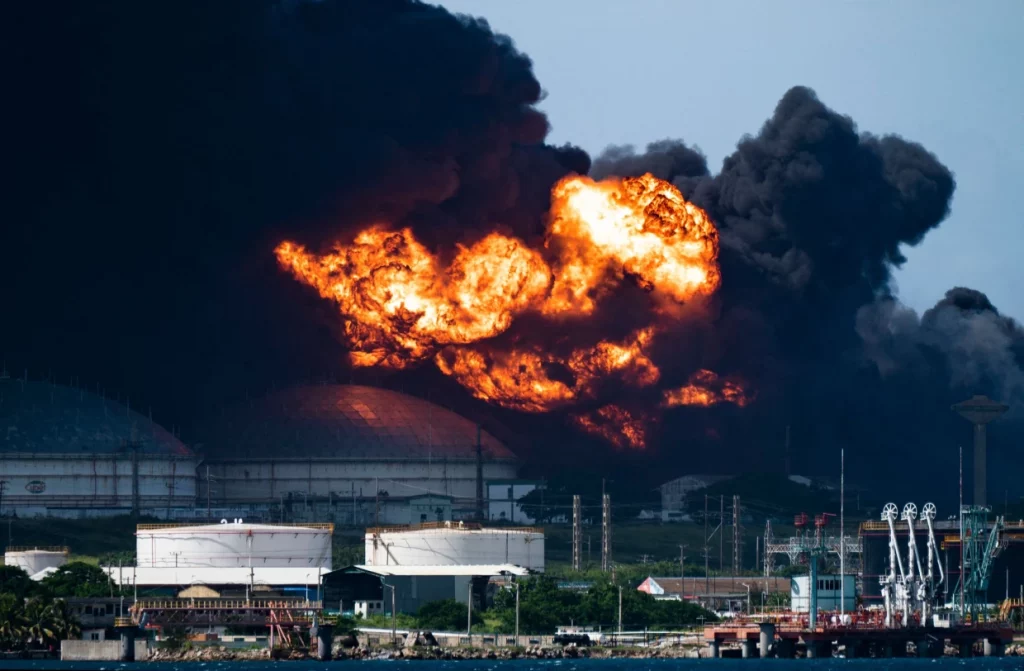Storage Tank Explosion
Lightning struck a large oil storage tank on the evening of Friday, 05 August 2022 in Matanzas, Cuba, causing a huge fire. It is now spreading to adjacent storage tanks. There are 17 missing, 121 were hurt, and 1 confirmed dead in the incident as previously reported.
Similar previous incidents happen in the oil & gas industry.
Wynnewood, 65 miles south of Oklahoma City, Friday, April 27, 2007, just before noon: a tank fire sparked by lightning burns at the Wynnewood Oil Refinery in Garvin County. Two storms hit Wynnewood in less than one hour. They both produced giant lightning bolts. One of them hit a large storage tank holding light oil (naphta, an unrefined form of gasoline) sparking a large explosion. This explosion which blew the roof of the barrels was felt kilometers away.
In Cilacap, Indonesia, in October 1995, a lightning flash struck the Indonesian oil refinery Pertamina in Cilacap, on the Southcoast of Java. This refinery covered one-third of the Indonesian inland requirement. The tank struck exploded and the burning oil set fire to six other tanks on the plant. Thousands of inhabitants and four hundred Pertamina employees had to be evacuated for safety reasons.
Primary Causes of Explosion and Prevention
The primary causes of the incidents in Wynnewood and Cilacap were incomplete equipotential bonding. Though the Cuban explosion is still being investigated, in my opinion, the cause will be the same. Lightning protection and earthing systems need to be inspected and audited at regular intervals to ensure their viability when required.
In general, the necessary precautions for the prevention of explosion due to lightning strikes are:
- Keep the lightning discharge channel far away from the immediate neighborhood of flammable and explosive materials;
- Example - install air termination network at a safe distance from roofs with flammable and explosive materials;
- Avoid sparking or flashover in joints and clamps including nearby components;
- Example - use only reliable and durable joints and connections;
- Avoid overheating of conductors;
- Example - increased number of down conductors for greater subdivision of the current;
- Prevent flashover or sparking due to induced voltages;
- Example - Ensure equalization of potentials by screening the electrical installation and bonding of all non-current carrying metal, equipment, and installations.
- Prevent raising the potential of the earth termination system.
- Example - Interconnect all earthing systems of structures, buildings, and installations. The interconnection of earthing systems gives a low impedance between all structures and has significant advantages related to the electromagnetic compatibility requirements.
The damage of lightning strikes on a structure will not only loss of property but the loss of life as well. A lightning protection system shall be included in the priority list when performing electrical design of industrial plants, particularly in the oil and gas sector.
References:
- IX International Symposium on Lightning Protection - Lightning Protection Of Oil And Gas Industrial Plants by Christian Bouquegneau
- DEHN Lightning Protection Guide
